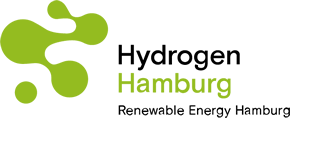Details
H₂-ready: Future-proof power plants How H2-ready gas-fired power plants are designed to enable the phase-out of coal, while paving the way for hydrogen at the same time.
EEHH member company EnBW is building on H₂-ready power plants that currently run on natural gas and, starting 2030, will be gradually converted to hydrogen. Using a moderate additional outlay today to avoid billions in investments tomorrow. Andreas Pick, Head of Portfolio Development for Marketable Production at EnBW, meets with us to explain what H₂-ready means and which incentives are currently necessary.

EEHH member company EnBW is building on H₂-ready power plants that currently run on natural gas and, starting 2030, will be gradually converted to hydrogen. Using a moderate additional outlay today to avoid billions in investments tomorrow. Andreas Pick, Head of Portfolio Development for Marketable Production at EnBW, meets with us to explain what H₂-ready means and which incentives are currently necessary.
EEHH: How does EnBW assess the German government's plans to build 20 gigawatts of gas-fired power plants and possibly dispense with making hydrogen capability mandatory?
Andreas Pick: Here at EnBW, we believe that the tendering of gas-fired power plants on this scale is an urgent, if not overdue, measure to displace coal from marketable electricity production. This will lay the foundation for the phase-out of coal and decarbonise energy supply step by step.
On the other hand, I think it would be a wasted opportunity to dispense with creating hydrogen capability in the new power plants. A modern gas-fired power plant that is currently being planned can be designed for conversion to 100 percent hydrogen at a reasonable additional cost. Viewed from the perspective of our own carbon targets, we will most certainly design our power plants to be H2-ready.
EEHH: Do you share the opinion of the German government that we will need long-term gas contracts combined with CCS/CCU to safeguard supply security beyond 2035, or are other options conceivable?
Andreas Pick: Our clear preference is to deploy power plants with direct use of CO2-free gases to decarbonise electricity production, so green or, in a transitional phase, blue hydrogen. There are several arguments against CCS facilities at the power plants themselves. First and foremost, these include the lack of CO2 infrastructure – which would be extremely costly to build – as well as the loss in efficiency at power plants with CCS separation facilities. What is more, it is unlikely that CCS facilities will achieve good capture efficiencies in the peak to low medium load range in which the gas-fired power plants are expected to operate. These separation facilities are generally designed for continuous operation. Hydrogen, by contrast, has already progressed further down the road and is likely to yield better economic results due to the infrastructure that is in the pipeline or under construction. It is our view that CCS can play a role in the production of CO2-free gases such as blue hydrogen during the transitional period. The purpose here would be to prevent what would presumably be an overly sluggish ramp-up of green hydrogen – but not at the power plant sites.
EEHH: What exactly does H₂-ready mean in the context of power plants? Can you describe the technology behind the term?
Andreas Pick: There are very significant differences in the properties of methane (natural gas) and hydrogen. These differences have technical implications that require upstream consideration when building an H2-ready plant so that the entire facility can be converted to hydrogen later on.
For instance, hydrogen can easily penetrate materials due to its small molecular structure. It is therefore necessary to build gas pipes in the power plants using materials that are impermeable to the small hydrogen molecules. Hydrogen has a lower energy density, so it would have to be directed into the gas turbine at a higher pressure in order to obtain an equivalent combustion heat output. A compressor system would therefore be needed. The space required for these facilities and their integration into the pipeline systems are already factored into the design of H2-ready power plants. Hydrogen also behaves differently to methane in the gas turbine combustion process. While this does not involve any modifications to the turbine itself, the burner nozzles need to be replaced when converting to hydrogen operation at a later date, and this must be possible or prepared accordingly.
Although H2 burns without producing emissions, nitrogen is still present in the combustion air. Given the higher temperatures at which H2 is burned, the volumes of nitrogen oxides produced are greater than with conventional gas combustion. They require filtration in suitable DeNOx facilities. Plans for H2-ready power plants need to include the space requirements for these larger filter devices and their integration into exhaust air flows from day one.
These are basically the trickiest and most important issues when approaching an H2-ready system.
EEHH: Thank you for the detailed explanation. What do these “tricky issues” mean for the design of a power plant – does the process become significantly more expensive or technically sophisticated?
Andreas Pick: At present, the integration of H2-ready requirements is associated with a moderate effort, expressed in increased space requirements and slightly higher investments amounting to around five percent of total costs. But the facility is then future-proof, as it lays the foundation for downstream operation with 100 percent hydrogen. Going forward, CO2-free operation can then be ensured without costly new investments.
EEHH: By which date does EnBW envisage switching the power plants to hydrogen?
Andreas Pick: We plan to switch to hydrogen in the mid-2030s. The above components, so the compressor and the larger DeNOx system, must be retrofitted then. Costs will also be in the single-digit percentage range of the original investment and are therefore reasonable. The retrofit will also be easy to include in a typical inspection or maintenance shutdown. From then on, the facility will run 100 percent on hydrogen.
EEHH: Have you already built H₂-ready power plants or are there any in the pipeline? Can you describe your experience with the technology?
Andreas Pick: We are already way beyond the planning phase. A first plant at the Stuttgart-Münster site with a nominal electrical output of 124 megawatts is already in operation and is H2-ready for conversion in 2035. Two other, larger gas and steam turbine plants at the Heilbronn and Altbach Deizisau sites with planned outputs of 675 and 665 megawatts respectively are under construction and will also be H2-ready. We are also doing the legwork for more power plant projects and are examining current and additional generation sites for future auctions under the envisaged Power Plant Security Act (KWSG). We will also bid for these projects, assuming the regulatory framework is sufficiently attractive.
EEHH: Could you give an estimate for the hydrogen requirement of an H2-ready or fully-operational hydrogen power plant?
Andreas Pick: How much hydrogen a large gas and steam turbine plant will require in practice depends on various parameters, such as the installed capacity, the number of operating hours at full load and therefore the amount of electricity produced. Let’s do a model calculation: take a plant with 600 megawatts of electrical output that will later run on hydrogen in the low medium-load range with 2000 full-load hours – so only when renewables are unavailable or demand outstrips production from renewables. A projected 1.2 terawatt hours of electricity would be produced each year in this case. Hydrogen requirements would be in the region of 60,000 tonnes per year, assuming 60 percent plant efficiency. It’s important to remember that modern gas and steam turbine power plants achieve efficiencies of 60 percent regardless of whether natural gas or hydrogen is used. This is a major advantage compared to coal-fired power plants, whose efficiency is only around 40 percent and therefore significantly lower.

EEHH: Based on the merit order principle, it is not possible to finance the power plants needed for supply security and grid stability solely with the electricity revenue from the few expected operating hours. So which incentives will operators need?
Andreas Pick: Broadly speaking, the incentives that are or were planned under the current and previous governments. To build power plants in this magnitude, we need remuneration for the available electrical capacity. In other words, power plant amortisation is not based only on the few operating hours, as they also receive remuneration simply for being able to deliver the required electricity capacity on demand and at any time. This is the underlying premise of the Power Plant Security Act (KWSG), which Ms Reiche also intends to consider in new tenders for power plants. In the long term, the planned capacity market can then create this incentive.
EEHH: You also have battery storage projects on the go. How will they add to the H₂-ready power plants going forward?
Andreas Pick: Let me be clear: we will need both battery storage and H2-ready gas-fired power plants in the energy system of the future. This is what prompts EnBW’s massive investments in battery storage. Just two examples: we recently decided to invest in a large battery with a capacity of 100 megawatt hours at the Marbach power plant site, which is currently under construction. Another battery storage project with an output of 400 MW and a capacity of 800 MWh is in the pipeline in Philippsburg. We can complete these projects economically because they help to balance out the volatility of renewables.
Another common point of discussion is whether batteries can replace gas- or hydrogen-fired power plants. I do not believe they can, as batteries and power plants have different strengths and business models. Batteries are primarily intended for short-term storage with many charging cycles. Current batteries store around 1½ hours on average, while large batteries will be able to store between four and six hours moving forward. Gas-fired power plants will be needed to bridge the gap in protracted periods without renewable electricity – such as winter nights or extended cloudy spells – as they can revert to energy carriers that are suitable for long-term storage. Batteries have trouble operating economically if they have to store electricity over a longer period but are only rarely discharged. Gas-fired power plants eventually become the more economical solution in these cases.
EEHH: Can you describe how market uncertainty surrounding the hydrogen ramp-up is impacting your investment decisions?
Andreas Pick: Our investment decisions are predicated on basic hydrogen availability at the planned changeover date from 2035. This will only work if suitable hydrogen facilities are implemented in good time. Timely installation is jeopardised not only by technical or commercial feasibility, but also by the classic chicken-and-egg scenario we are witnessing. At present, investments in the production of green hydrogen by means of electrolysis are still sluggish due to the lack of specific demand for green hydrogen, which prevents the emergence of a functioning market. This exacerbates the pricing process for hydrogen producers and consumers alike. Market players are therefore reluctant to make investment decisions involving expenditure on hydrogen. With this in mind, we believe it is all the more important to stick to the commitment to build new gas-fired power plants that can be converted to hydrogen later on, as doing so creates anchor customers who generate predictable demand. Doing so should accelerate both infrastructure development and the market ramp-up.
EEHH: Do you believe that H₂-ready is the only bridge technology for the coal phase-out?
Andreas Pick: We view hydrogen power plants, combined with the battery storage systems I mentioned earlier, as the only viable technology. I already reiterated our view that CCS is more suited to the production of emission-free gases such as blue H2. Germany does not have enough locations for other options such as pumped storage power plants and pressurized storage power plants etc. to cover a significant proportion of the electricity demand once the coal-fired power plants have been decommissioned.
Thanks for the interview!


